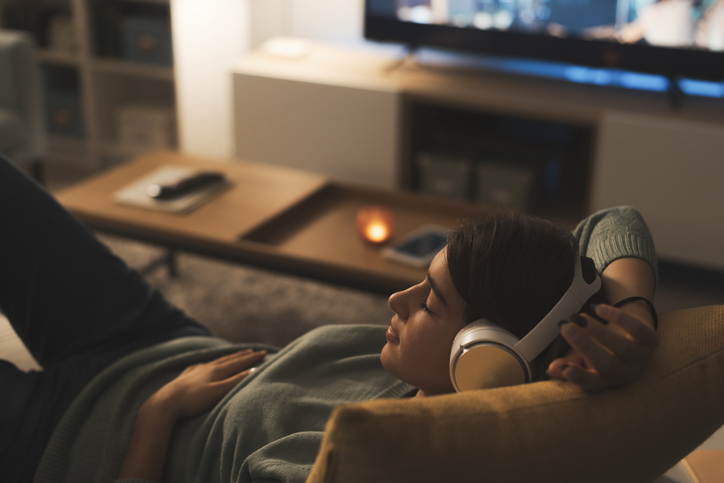Fast pace, lack of sleep, and hyper-productivity prevent us from feeling rested and energized throughout the day. Although taking a break in some cultures is canon, the truth is that restorative naps have benefits not only for increasing our productivity but also for general health.
Rest as part of well-being
By sleeping, we allow the body rest, restoration, and renewal, helping the immune system to function better and optimizing our sense of alertness during the day. However, sometimes it is impossible to have optimal rest, so the solution to enhance our well-being could be … a nap?
Restorative naps, also known as power naps, are short but effective naps that improve cognitive performance, logical reasoning, reaction time, and short-term memory. They also help to increase productivity, creativity, and sports performance. In addition, they promote relaxation and good moods, reducing the risk of coronary heart disease (Dutheil et al., 2021).
On the other hand, people who have chronic sleep deficits are more likely to have high blood pressure, heart disease, diabetes, obesity, and depression.
But what should its duration be? According to experts, restorative naps should last approximately 10 to 30 minutes. Longer naps can be counterproductive because the human body, like any system, has established times and processes for healthy functioning organisms. However, other experts mention that, for those who don’t get enough sleep, a 90-minute nap can be equally beneficial to “compensate” for the hours of sleep not taken during the regular rest.
Rest and productivity
Companies like Nike, Google, Uber, Samsung, Facebook, etc., have incorporated napping into their work culture to encourage well-being and productivity. Likewise, studies suggest that students who take restorative naps before an exam are more likely to perform better academically than those who don’t.
A very marked correlation exists between lack of sleep and workload; we sleep less because we work more. Ironically, this causes us to have lower output or poor quality because the human body needs breaks, active pauses, and disconnection for optimal work, academic achievement, or sports performance, coupled with the fact that we are not robots.
Here are some specific recommendations for an excellent restorative nap:
- Find a suitable place: Although some people can sleep almost anywhere, it is essential to consider that the noise, light, and temperature of your sleeping space should be ideal for facilitating a good nap and its benefits.
- Find a comfortable position: Although it is a quick nap, we must not forget that the rest must be satisfied for optimal benefit.
- Set an alarm: It is important not to sleep longer than necessary because a 20-minute nap could unintentionally become a sleep marathon.
- Take a nap early: According to experts, naps late in the day can cause problems with your current sleep cycle, so falling asleep takes longer than usual, leading to sleep deprivation.
Factors that disrupt sleep
Although restorative naps can be a great tool to increase well-being, it is necessary to consider that our sleep hygiene must be adequate to avoid sleep disorders or problems that may affect us in the long term. Some factors that cause sleep disturbance are stress, caffeine, alcohol, drugs, noise, temperature, and factors related to a person’s lifestyle and occupation.
Here are some suggestions for improving your sleep habits:
- Screen time: Reduce using devices like cell phones, tablets, TV, or computers before sleep.
- Sleep schedules: Maintain set schedules for sleeping and waking.
- Lighting, noise, and temperature: Creating a suitable environment to rest is vital, so having a room without light and noise and a comfortable temperature will facilitate it.
- Diet: Avoid caffeine, excessive alcohol, or heavy meals before bed.
- Physical activity: Exercise helps reduce stress, improving mood. However, exercising with moderate to high intensity before sleeping increases endorphin levels, hindering falling asleep. Thus, complete your exercise a couple of hours before your bedtime.
Some applications can help us monitor or fall asleep. You can use music with a specific hertz, white noise, or melody that enables you to relax at night for a peaceful and restful deep sleep.
Daily life and its hustle and bustle throw us into an accelerated pace, leaving aside the rest we need to function effectively. Therefore, restorative naps can make a significant difference in our daily lives because when we wake up, we are energized to continue our routine activities, increasing performance and reducing fatigue.
A restorative nap cannot solve a chronic problem, but it is an answer for those who need a break between activities, especially after eating.
So, if you are looking for an energy shot between activities, ironically, according to science, a “doze” would not hurt us.
References
Dutheil, F., Danini, B., Bagheri, R., Fantini, M. L., Pereira, B., Moustafa, F., Trousselard, M., and Navel, V. (2021). Effects of a Short Daytime Nap on the Cognitive Performance: A Systematic Review and Meta-Analysis. International journal of environmental research and public health, 18(19), 10212. https://doi.org/10.3390/ijerph181910212
Translation by Daniel Wetta
This article from Observatory of the Institute for the Future of Education may be shared under the terms of the license CC BY-NC-SA 4.0 
)
)


)